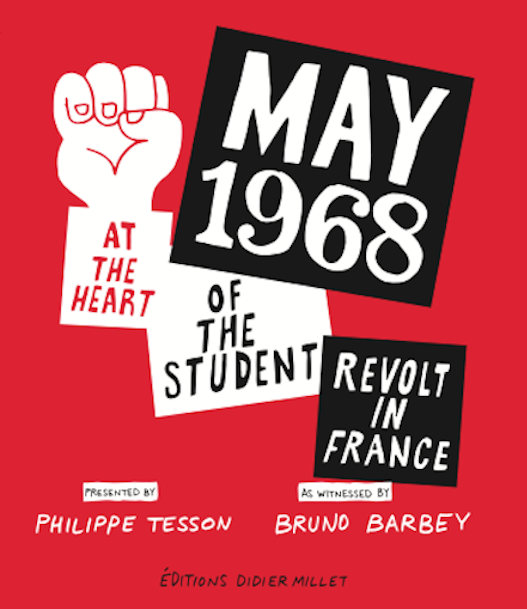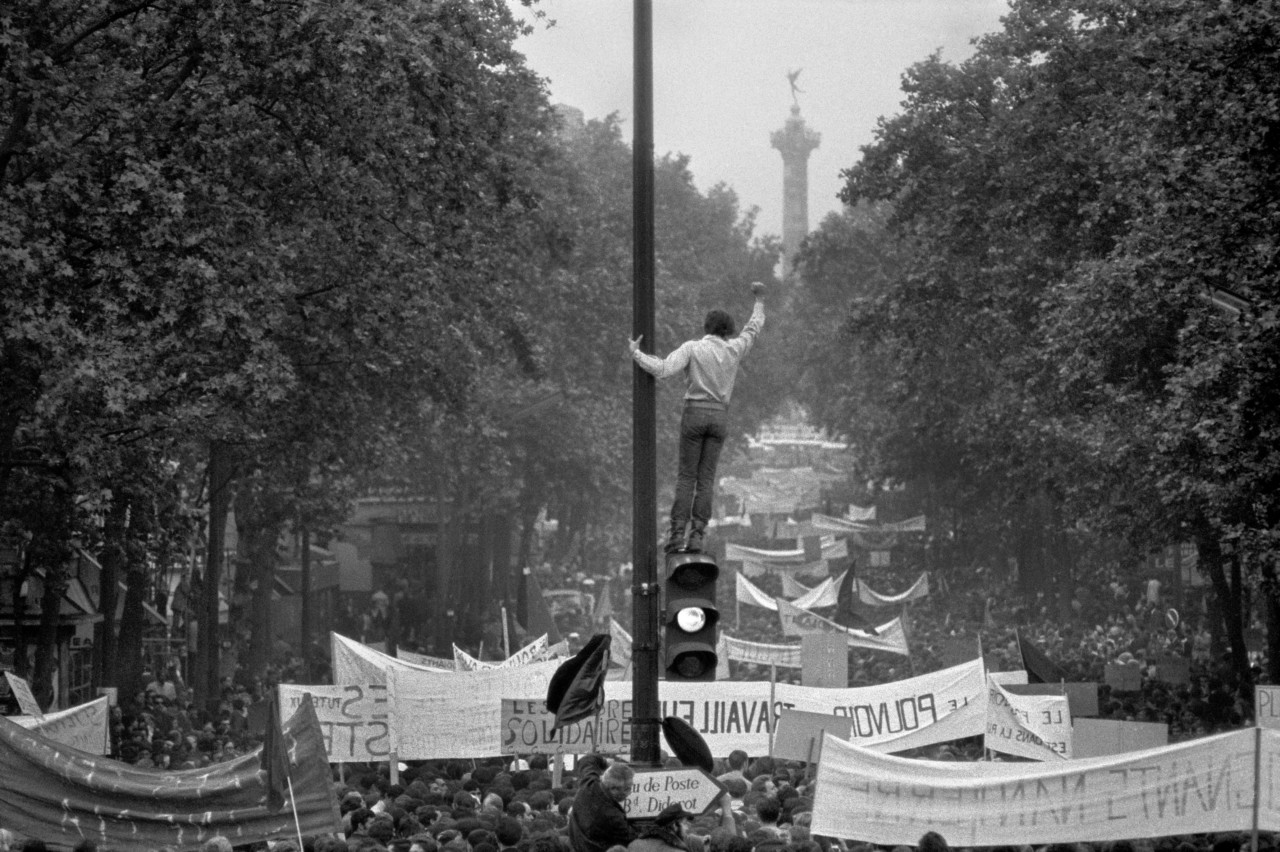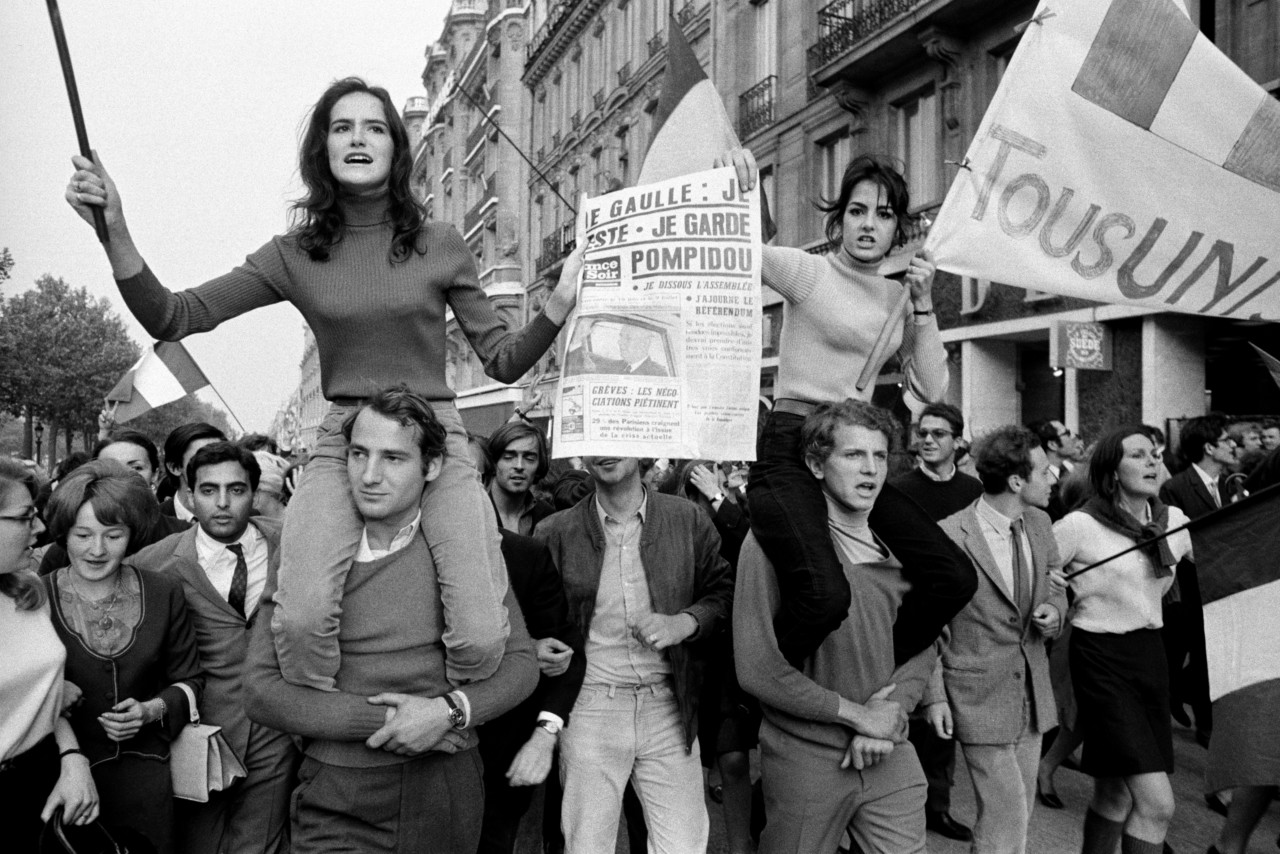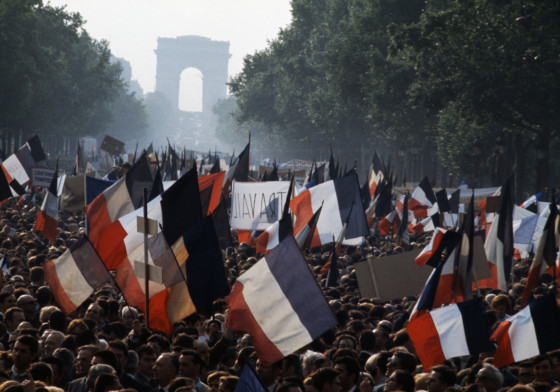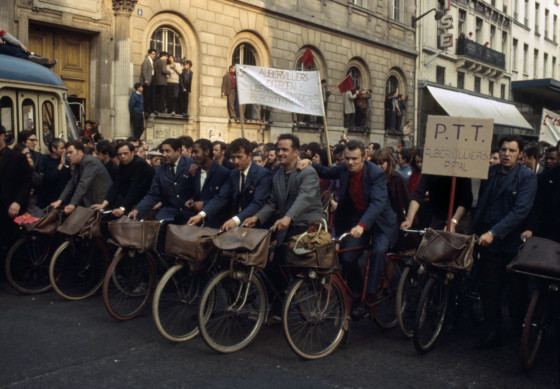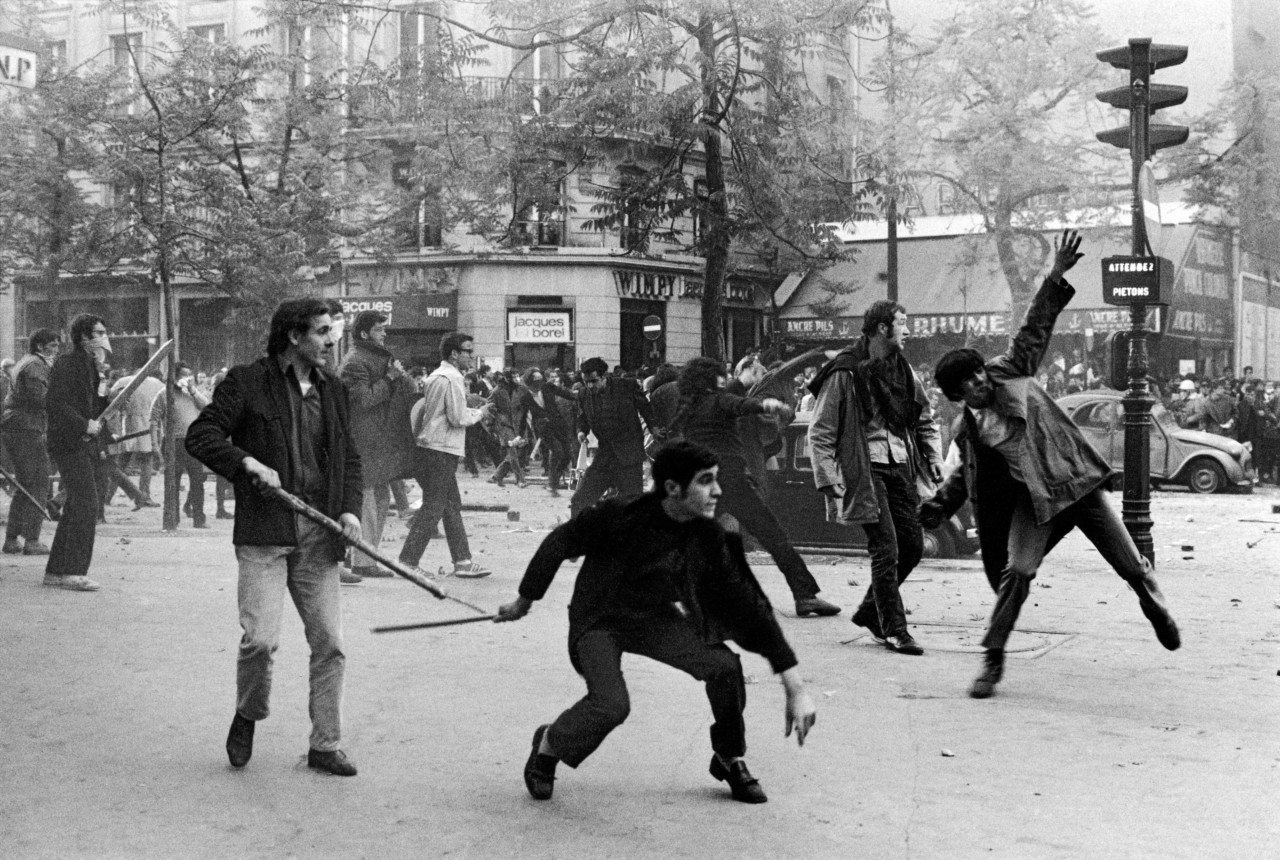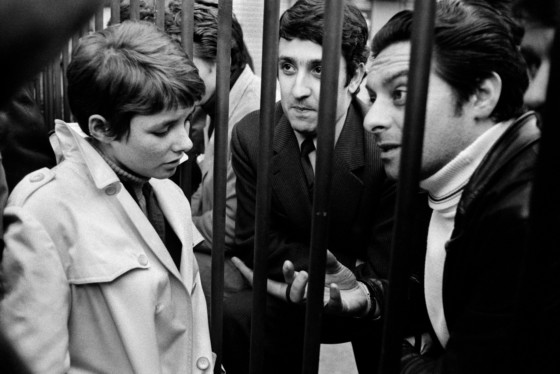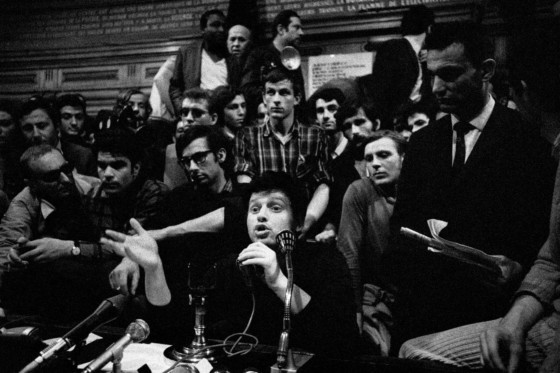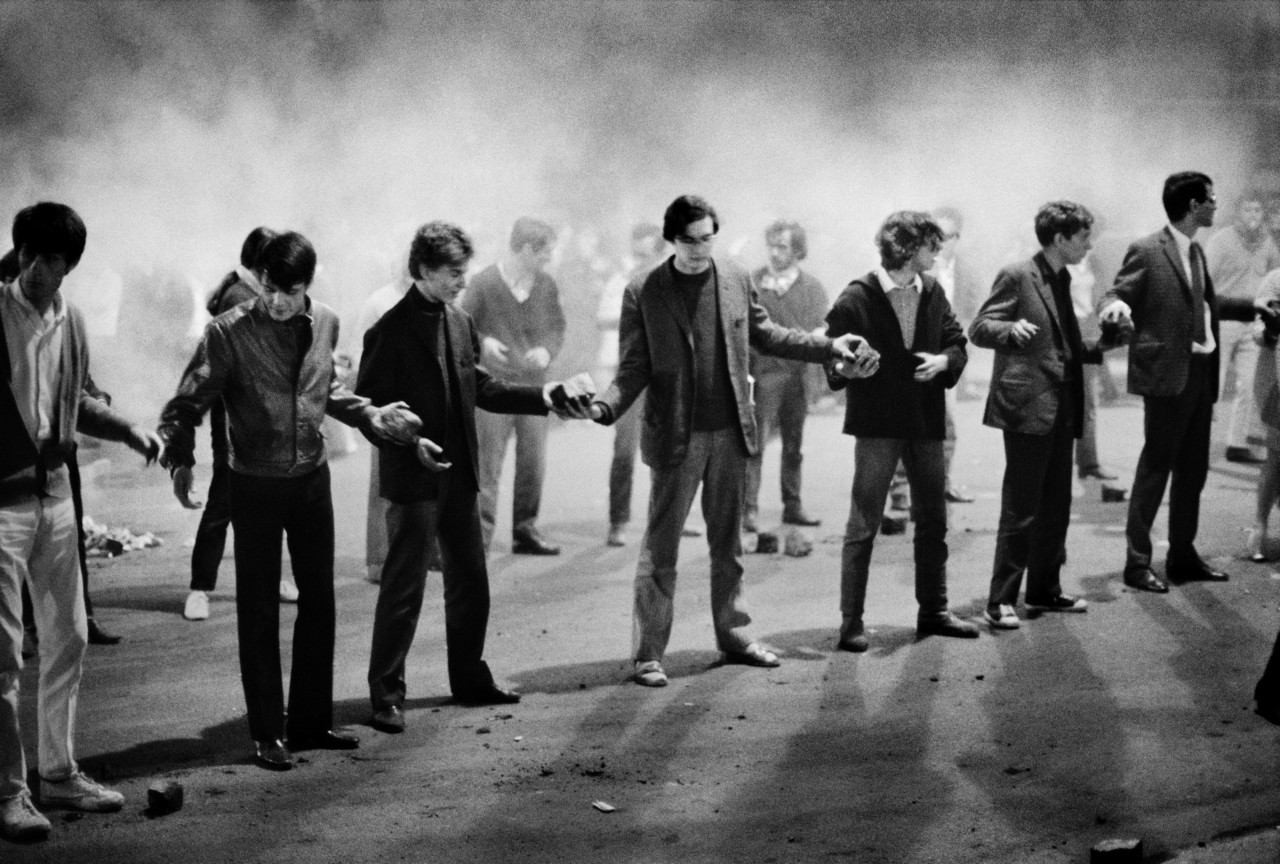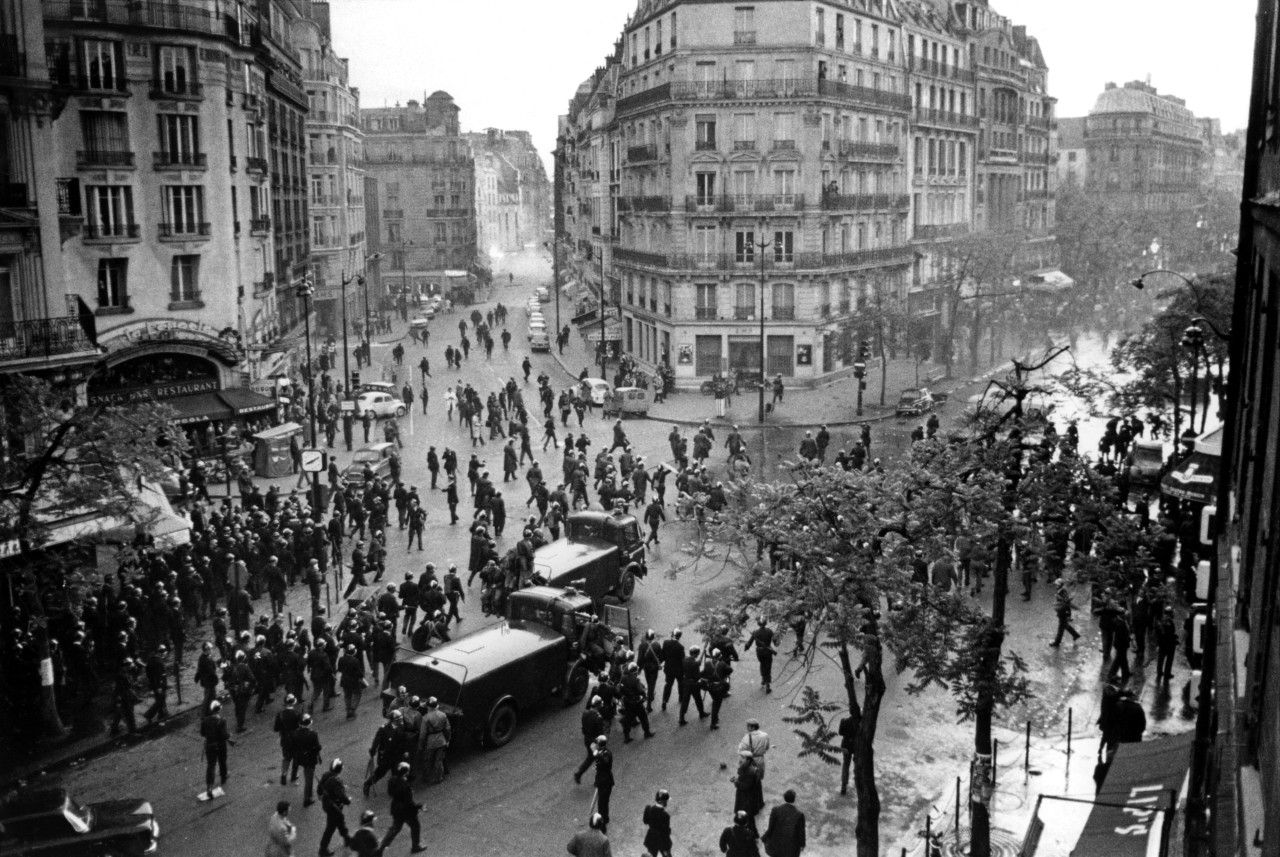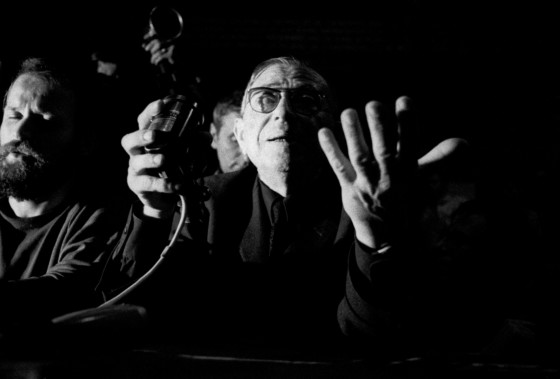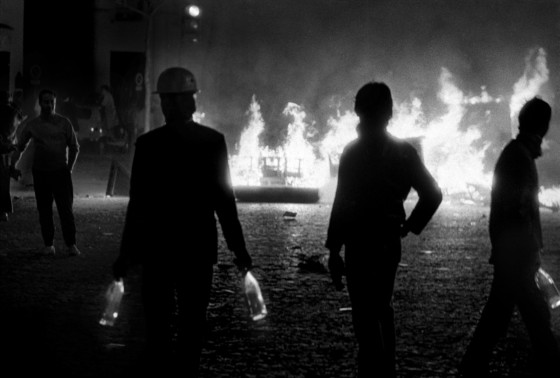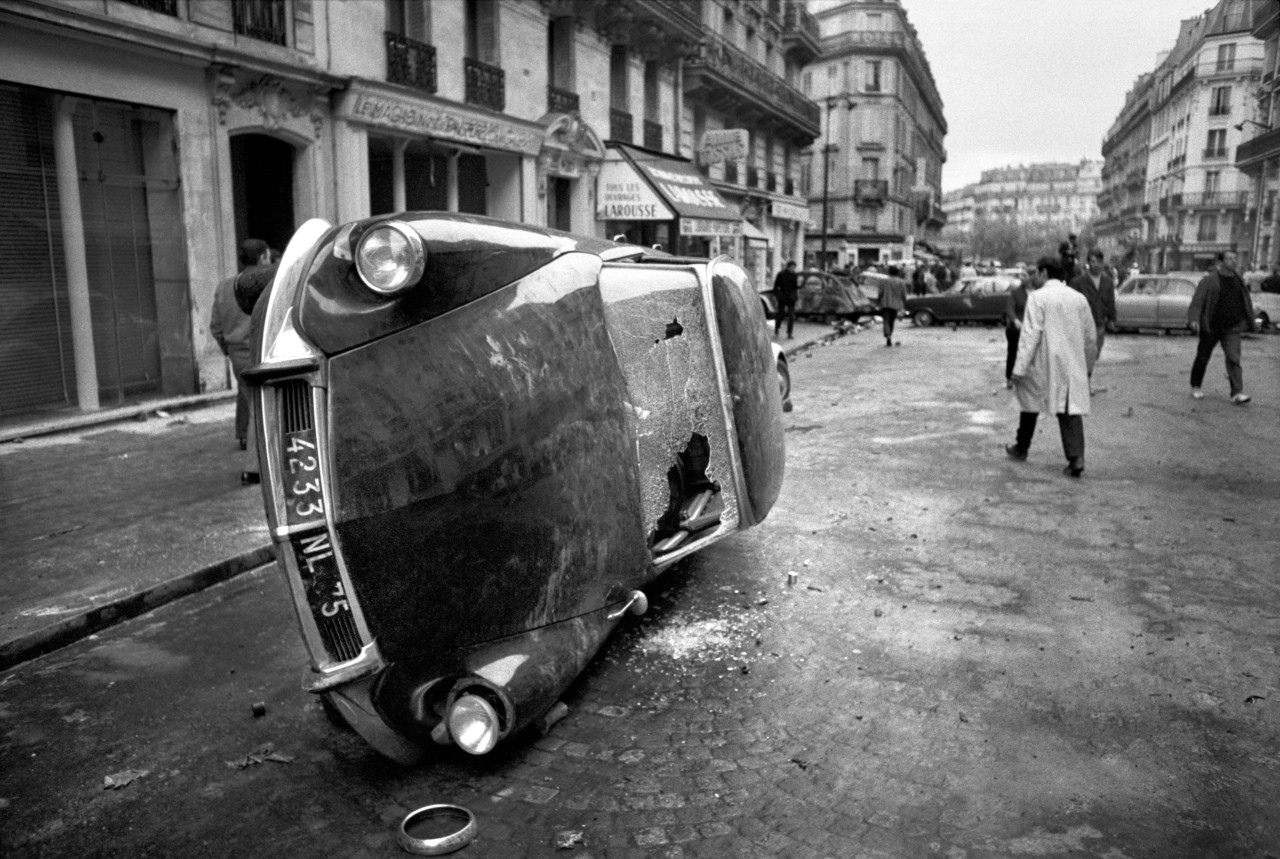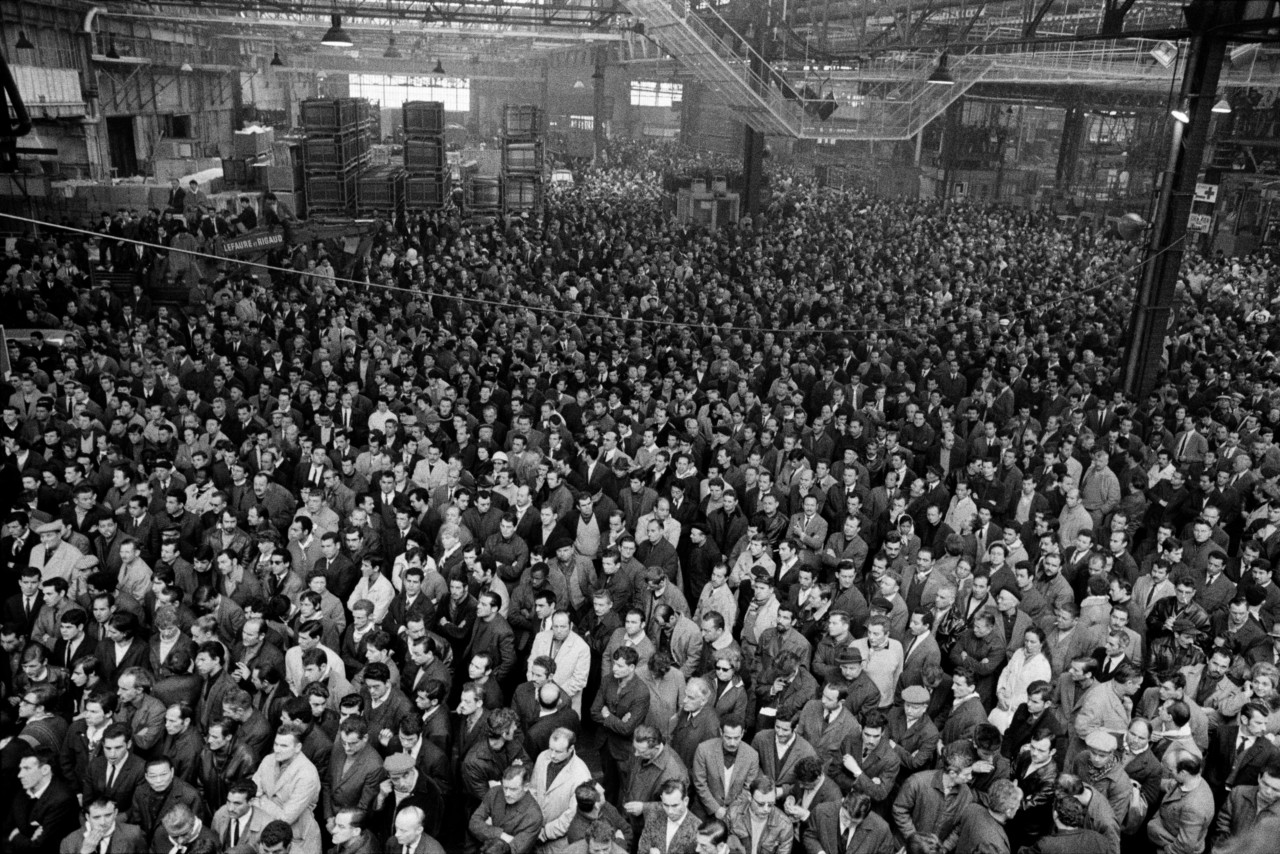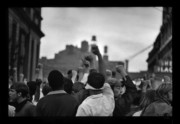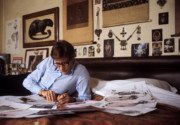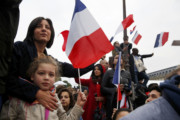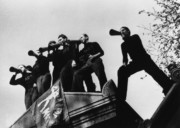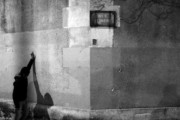Beyond the Myth: The Legacy of May ’68
Fifty years on, Magnum photographer Bruno Barbey reflects on his iconic coverage of one of the most chaotic months in French history
“Be realistic: Demand the impossible!” This slogan, penned by the philosopher and theorist Herbert Marcuse, goes some way in explaining the heady spirit of France in May 1968.
The turbulent month began with a student protest against an outdated University system and quickly morphed into an all-inclusive uprising against capitalism, communism, paternalistic politics, media censorship, gender inequality and more. This youthful idealism was felt in campuses across the globe that year – from Mexico to Prague to Japan – but nowhere else did the crisis spread so quickly to the rest of society.
Students may have started it but soon their cause was coupled with that of weary factory workers, whose needs were more tangible; better pay and better hours. On May 13, a huge worker and student demonstration demanding the fall of the government under Charles de Gaulle throttled the Left Bank. By May 24, eight million workers went on an indefinite strike – the largest in French history. This unlikely alliance brought Paris – and soon the rest of France – to a halt.
But by end of the month, things began to fall apart. The public – initially on the side of the protesters – grew weary of street clashes and dysfunctional public services. Meanwhile, the student-worker union soured after the government struck a deal with the latter. That month, or seven weeks to be precise, did not end in revolution and de Gaulle was re-elected – albeit on a thin majority – for another term.
May ‘68 became a myth before the dust had even settled and today, its legacy is glorified by some and condemned by others. Daniel Cohn-Bendit, the student who led the charge all those years ago, was prompted to pen an essay titled ‘Forget ‘68’ in 2008, which reminded readers that the movement was a revolt and not a revolution. But societal change did come – even if indirectly – and there can be no doubt; that summer France was yanked out of the dusty gloom of post-war conservatism and into an era of nonconformity.
Below, Magnum photographer Bruno Barbey – whose coverage has become an iconic record of the time – reflects on the spirit and fervor of that month and what it means in the context of today. Fifty years on, the world may be unrecognizable, but on gun control, education reform and more, young people are once again leading the march of liberation.
"I’ve never seen such violence in a western capital as I saw in Paris that month"
- Bruno Barbey
Bruno Barbey
“The most astonishing aspect of May ‘68 was to see all these open discussions among every social milieu and this need people had to speak up for everyone else. People came out on the streets – and they weren’t just students – and had the urge to discuss, to reform the world, to search for freedom. I wasn’t a militant but I sympathised with the demonstrators.
“I’ve never seen such violence in a western capital as I saw in Paris that month. Barricades were being built with anything on hand – wheels or cars or even movie advert boards. Once I came across a poster of the Henry Fonda film Madigan being used, then when it started burning, things became totally surreal. Naturally, the French people supported the students at first because they didn’t like the way the police were beating the crowd. But eventually after weeks and weeks of protests, people were fed up of the strikes, they wanted to fill their petrol tanks.
“One of the great moments that I photographed was the meeting of the students and the workers at Boulogne-Billancourt Renault factory. This was restricted somewhat by the unions who didn’t want ‘uncontrollable’ militants outside the factories because they believed they were leftists, maoists, trotskyites and anarchists. But I remember this young student trying to talk with the Renault workers through some railings, she wanted to share her mad ideas to change the world.
“Another extraordinary event was at the Sorbonne University, around 2,000 people were gathered in a huge amphitheatre. Writers and all kinds of people from left to right wing met to debate and discuss ideas and intellectuals like Jean Paul Sartre gave speeches.
"People came out on the streets - and they weren’t just students - and had the urge to discuss, to reform the world, to search for freedom"
- Bruno Barbey
“During May ‘68 we were on alert constantly. Every time there was a big demonstration or something, I just took my bicycle and motorbike and went there. Usually things happened at night. The professional photographers all had a flash but I worked without one and I don’t regret it. Cartier-Bresson and Marc Riboud were using Leicas without flash. The photos were sometimes blurred but that gave the atmosphere of the street better and left areas of shadow.
“There were practically no movie cameras. I only remember William Klein filming and some foreign television crews working, but ORTF was on strike and there was no French television. The photography at that moment really had a role and importance that it doesn’t have today because of television.
“After May 68, I documented the demonstrations in Tokyo in October, which were extremely violent. Then I started working in Palestine with Jean Genet. Many were disillusioned at the end of the May movement but I wasn’t; I was occupied with other causes that were more urgent.”
Barbey has produced six books and two films on the subject of May ’68. His most recent are ‘May 68: At the Heart of the Student Revolt’ (Au Coeur de Mai 68), which is presented by Philipe Tesson and published by Éditions du Pacifique and 10 Juin 68: suite pour Gilles Tautin published by Créaphis éditions. Bazar do Tempo à Rio are also publishing a book this year called Paris 1968 Rio, which brings together Barbey’s Paris and photographer Pedro de Moraes’s Rio. There are five exhibitions of Barbey’s May 68 photographs currently on view, including one in Shanghai.
